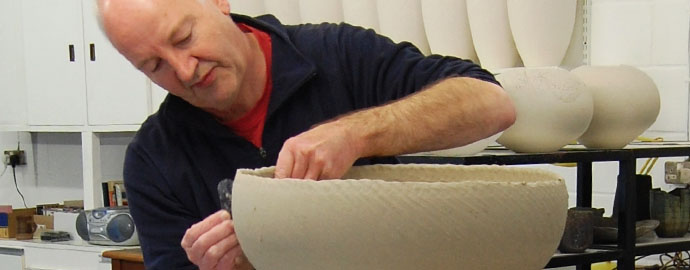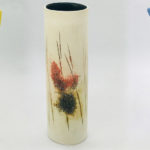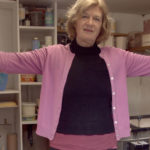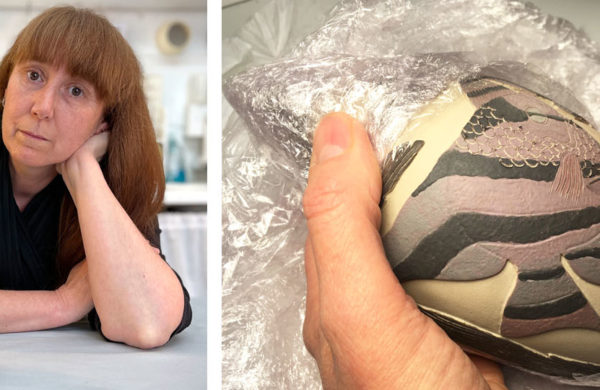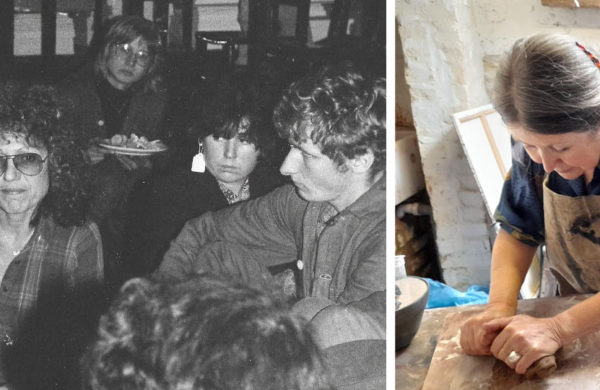Stephen Murfitt a professional raku potter describes his ceramics journey:
Born and brought up in the fenland village of Little Downham near Ely in Cambridgeshire, I have a very personal affinity with this unique fen landscape. My first pots were made at Soham Grammar School and my Art teacher and mentor, Peter Askem, encouraged me to go on to the very special foundation course at the Cambridge School of Art. It was here that I experienced my first Raku firing in the back garden of my pottery tutor, Zoe Ellison. During my two years at the School of Art, regular visits to the Fitzwilliam museum and Kettles Yard helped to inform my growing obsession with sculpture and especially pots. Many hours were spent drawing Greek, Roman, Egyptian and mediaeval vessels. Zoe advised me to apply for the degree course in three-dimensional design at Farnham (then known as the West Surrey College of Art and Design).
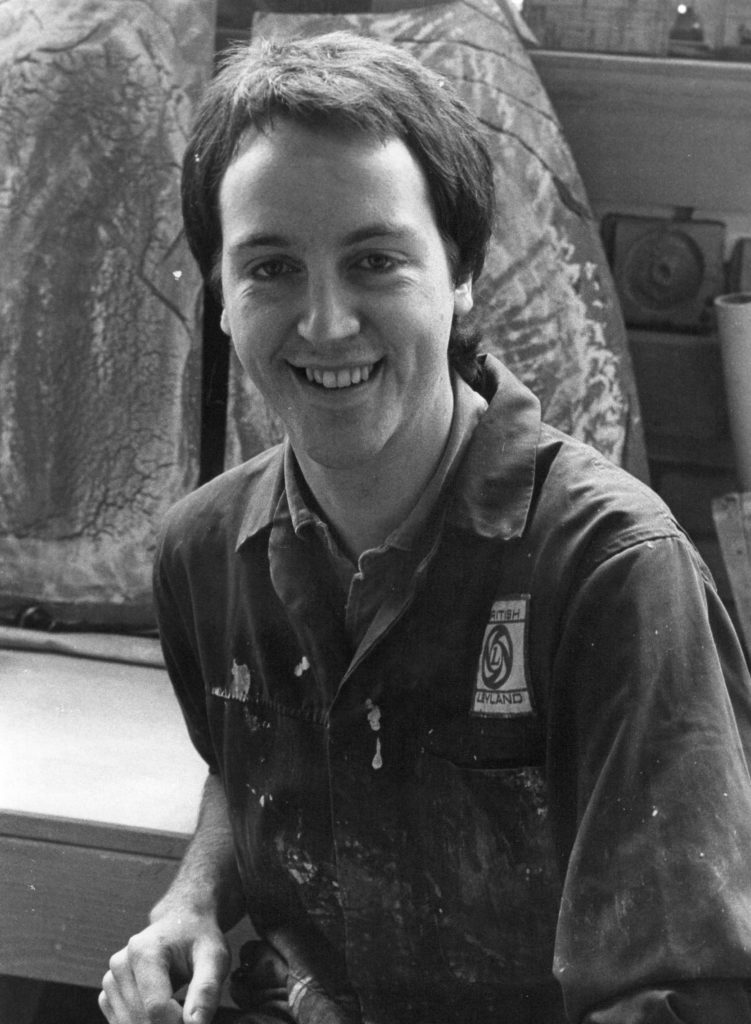
This proved to be a life-changing experience for me. Influences were many and included the tutors Henry Hammond, Paul Barron and my personal tutor, Sebastian Blackie. Duncan Ross was our Ceramics technician and Magdalene Odundo and Dave Burns were fellow students (to name but a few!). It was at Farnham where I met my wife, the artist Terry Beard, while she was doing her degree in Textile/Fashion Design.
After gaining my Post Graduate Art Teacher’s certificate at the Middlesex Polytechnic, I set about making a career which combined teaching and making pots. After several years as the Ceramics and Sculpture tutor at Marlborough College in Wiltshire, I returned to my native fens to establish a studio and workshop near Wicken Fen in Cambridgeshire. A recent move to a converted Methodist Chapel in the Huntingdonshire fens has inspired new ideas. The vast and ever changing skies with the beautiful surrounding environment of fen woodlands provide constant points of reference. My workshop windows overlook a fenland nature reserve which contains a preserved brick kiln and remains of clay pits associated with that cottage industry from the past.
My pots are made using hand building techniques which have been adapted over the years to become my own personal process of making. Coils are hand-rolled and applied methodically and slowly, allowing for contemplative and intuitive developments to be made to each form.
The Raku firing process has been adapted to suit the scale of the wares. A range of kilns (from small test kiln size to very large) built in sections to enable the firing to accommodate the shape and scale of each piece being fired. As much of the work is quite large scale, a slow rise in Temperature is essential with the post-firing reduction in separate metal bins often lasting several hours.
Each firing is an exciting experiment and usually the results will present another area of focus for further exploration. The pots always reflect the intense drama of the firing/reduction process which involves so many variables!
Why not check out Stephen’s Cambridge Ceramics page to see his latest work or visit his website for more information?

